
He discovered an interest in photography at the age of 10. At the same time, his interest in birds grew. In 2005, he linked his two passions and today, whether at home (France) or abroad, he takes any opportunity to capture images of all species of birds.
Haematopus moquini has a coastal breeding range which stretches from Lüderitz, Namibia, to Mazeppa Bay, Eastern Cape, South Africa. The total population is estimated to number 5,000-6,000 individuals (T. Dodman in litt. 2002 to Wetlands International 2002), with about half occurring along the Western Cape (South Africa) coastline, half of these on its near-shore islands.
3 Photos
Spheniscus demersus breeds at 25 islands and four mainland sites in Namibia and South Africa (Kemper et al. 2007). It has been recorded as far north as Gabon and Mozambique (del Hoyo et al. 1992). Breeding on Neglectus Island, Namibia, was confirmed in 2001, following the absence of confirmed breeding since 1952 at least, and an increase in numbers since 1995 (Roux et al. 2003).
5 Photos
Menura alberti is confined to a relatively small area of rainforest between Blackwall Range, New South Wales, and Mistake Range, Queensland, Australia. New South Wales is thought to support less than 800 pairs, with highest densities at Whian Whian State Conservation Area in Nightcap Range. This species is listed as Near Threatened as although it is restricted to a small range and number of locations and the number of individuals is small, favourable management (including protection of the most important population) has meant that habitat quality and numbers are not thought to be declining. Regular monitoring of both species and habitat is needed to confirm the continuing effectiveness of this management.
1 Photos
Psittacula eupatria is widespread in South and South-East Asia, ranging from Pakistan, India, Sri Lanka, Nepal, Bhutan and Bangladesh, Myanmar, Thailand, Laos, Cambodia and southern Vietnam. This species has been uplisted from Least Concern on the basis of new information about its population trend. It is listed as Near Threatened because, although it remains common in some areas and the status is clouded by feral populations, it is suspected to be undergoing a moderately rapid population decline owing to on-going habitat loss, persecution and trapping pressure.
2 Photos
This species has an extremely large range and consists of several subpopulations using different flyways. The lapponica subspecies which breeds and winters within Europe is thought to be experiencing an increase in the wintering population but the breeding trend is unknown. Of the taymyrensis subspecies which breeds in Siberia the population wintering in west and south-west Africa is estimated to be declining whilst the trend for the population wintering in south and south-west Asia and east Africa is not known. Two subspecies, menzbieri and baueri, use the East Asian-Australasian Flyway and are both undergoing extremely rapid declines, probably owing to severe habitat loss in the Yellow Sea. As a result of severe declines in populations using the East Asian-Australasian Flyway the species has been uplisted to Near Threatened.
15 Photos
This species is classified as Near Threatened because it is suspected to have undergone moderately rapid declines during the past three generations (41 years) owing to habitat loss and incidental poisoning and pollution, and is consequently believed to approach the threshold for classification as Vulnerable. Putative reasons for declines vary, but include poisoned baits, pesticides, trapping for international trade, nest disturbance from spreading human settlements, and increased intensification and degradation of agricultural land (Ferguson-Lees and Christie 2001, N. Baker in litt. 2005, S. Thomsett in litt. 2005). The major cause of the decline seems to be almost entirely poisoning by a few large-scale commercial farmers, but poisoning is also a problem in tribal small-stock farming communities.
10 Photos
This species is widely and disjunctly distributed across the Palearctic, Afrotropical and Indomalayan regions, but is very rare in some areas and thought to be in decline overall (Ferguson- Lees and Christie 2001). This species has been uplisted to Near Threatened owing to evidence that is has undergone a moderately rapid population decline over the past three generations.
2 Photos
Mellisuga helenae is endemic to Cuba. Formerly widespread throughout the island and the Isla de la Juventud, it has disappeared from much of its range and is now restricted to a few localities including Guanahacabibes Peninsula and Sierra del Rosario, the Zapata Swamp and its vicinity, as well as in the east of the island in Holguín, Santiago and Guantánamo. The population decline is principally the result of habitat modification and destruction.
2 Photos
Grallaria rufocinerea occurs on both slopes of the Central Andes of Colombia (south Antioquia to west Putumayo) and north Ecuador (Sucumbíos). This species has a small range and population, which are declining in response to habitat loss. It is consequently classified as Vulnerable (Collar et al. 1992).
1 Photos
Colorful and rather chunky tanager with a stout bill. It is endemic to Colombia, where it inhabits cloud forest in the western Andes as well as the northern end of the central Andes. Plumage is black with an orange breast, yellow belly, and blue shoulders. Similar to Golden-chested Tanager, but yellow on underparts is much more extensive. Usually seen in middle to upper levels of the forest, sometimes with mixed species flocks. Song, often given from an exposed perch, is a rasping “pit-zhee” that may be given several times in quick succession.
1 Photos
This species occurs in Japan, China, Hong Kong, Pakistan, Nepal, Sri Lanka, Bangladesh, Philippines, Myanmar, Thailand, Laos, Vietnam, Cambodia, Peninsular Malaysia and Indonesia. It faces the full gambit of threats, from hunting and disturbance at breeding colonies to drainage and conversion of foraging habitats to agriculture and is consequently qualifies as Near Threatened.
1 Photos
This species is confined to the Da Lat Plateau in South Annam, Viet Nam, and adjacent Mondulkiri, Cambodia. This species occupies a moderately small range, in which the conversion of forested habitat for coffee plantations is rapid and ongoing. As a result of the loss and degradation of its habitat, the population is believed to be severely fragmented and declining. Therefore, the species has been uplisted to Vulnerable.
1 Photos
It is known that the Asian population has declined and, whilst the timing of this decline is not known, much of it is likely to have occurred during the last 60 years. Trends in Australia have not been properly evaluated; however, this population appears relatively stable. The overall population is estimated to be declining at a slow to moderate rate.
4 Photos
Although this species is widespread and has a large global population, its numbers have declined rapidly in parts of its range owing to changes in agricultural practices. Overall, the global population is estimated to be declining at such a rate that the species qualifies as Near Threatened. All of the images by Mike Pope in this gallery were taken in Kuwait.
29 Photos
Circus maurus is restricted to southern Africa, where it is concentrated in the Western Cape (its core range), and occurs in the Eastern Cape, the Northern Cape and Free State (where it is irruptive in both areas), in South Africa (R.E. Simmons in litt. 2004), and is also found in Lesotho (non-breeding birds) (R.E. Simmons, O. Curtis and A. Jenkins in litt. 2004), with a tiny isolated population in northern Namibia (less than 50 birds including about five pairs [Simmons 2005]). It is considered a vagrant in Botswana and Swaziland, where non-breeding birds occasionally occur (Hancock 2008).
1 Photos
This species is largely dependent on lowland evergreen forest within a region experiencing high rates of deforestation. Anthracoceros malayanus is confined to the Sundaic lowlands of peninsular Thailand, Sabah, Sarawak and Peninsular Malaysia, Kalimantan and Sumatra (including the Lingga, Bangka, Belitung islands), Indonesia and Brunei.
1 Photos
Anthropoides paradiseus is near-endemic to South Africa, with small breeding populations also in northern Namibia (c.35 birds at Etosha, isolated but stable [Simmons et al. 2006, K. Morrison in litt. 2012] after rapidly declining in 1980s-1990s) and western Swaziland (c.12 birds) (Parker 1994), and it is occasionally seen in Lesotho (K. Morrison et al. in litt. 2007).
1 Photos
Given its apparent restriction to lowland forest this species is suspected to have undergone rapid population declines that are likely to continue. It therefore qualifies as Vulnerable. It is endemic to Borneo, where it is recorded throughout; thus Sabah and Sarawak, Malaysia, Brunei and Kalimantan, Indonesia.
1 Photos
This species is likely to be declining moderately rapidly throughout its small range as a result of habitat loss. Napothera atrigularis is restricted to Borneo, occurring in the Sundaic lowlands of Sabah and Sarawak, Malaysia; Kalimantan, Indonesia, and Brunei. It is generally scarce and occurs at low densities even in suitable habitat.
1 Photos
This unique species is suspected to be declining rapidly throughout much of its range as a result of ongoing forest loss and degradation. Pityriasis gymnocephala is confined to Borneo, where it occurs patchily in lowland forests of Sabah and Sarawak, East Malaysia, Brunei and Kalimantan, Indonesia.
1 Photos
As a lowland forest specialist considered to be at high risk from the impacts of hunting and accessible to hunters across the majority of its range, in addition to suffering a moderately rapid rate deforestation, this species is now suspected to be undergoing a rapid population reduction and has been classified as Vulnerable. Lophura ignita is known from East Malaysia, Kalimantan, Indonesia, and Brunei.
1 Photos
This forest-dependent species is likely to be declining moderately rapidly throughout its range as a result of habitat loss and degradation. It is therefore considered Near Threatened, Meiglyptes tukki is confined to the Myanmar, Thailand, Sabah, Sarawak, Malaysia, Singapore, Kalimantan and Sumatra, Indonesia and Brunei.
1 Photos
Oxypogon stuebelii is only known from the Los Nevados National Park and its vicinity, around Nevado del Ruiz, in the Central Andean Paramo EBA in central Colombia. This species has a very small known range, within which it appears to be uncommon. Despite large parts of the range being protected in a National Park, its preferred páramo habitat is lost and degraded rapidly. The species therefore qualifies as Vulnerable.
1 Photos
This species occurs in primary and tall secondary rainforest within a region experiencing high rates of deforestation. The species occurs in the Sunda region. It ranges from the extreme south of Myanmar and southern Thailand (where it is locally vulnerable; V Chimchome and P. Poonswad in litt 2020), through Peninsular Malaysia to Borneo, Sumatra and Natuna Island (Indonesia) and Brunei Darussalam.
1 Photos
This species declined rapidly throughout its historic range from British Columbia to Baja California during the 19th century and reportedly disappeared from outside California. In 1987 the species became extinct in the wild when the last of the six wild individuals was captured to join a captive-breeding recovery programme involving 27 birds. The population only increased sufficiently above the threshold for listing as Critically Endangered in 2019.
1 Photos
Phalacrocorax capensis is endemic to southern Africa, where their usual non-breeding range extends from Lobito, Angola, on the west coast to Maputo Bay, Mozambique, on the east coast. This species is Endangered as key colonies in South Africa and Namibia have undergone rapid population declines over the past three generations. Declines are primarily believed to have been driven by collapsing epipelagic fish stocks, but the species is also susceptible to oiling and avian cholera outbreaks.
1 Photos
This species has been uplisted to Near Threatened following evidence that demand for the cagebird trade is now is suspected to be driving a moderately rapid to rapid decline on Sumatra within the most recent three generations. This species occurs from extreme southern Thailand through peninsular Malaysia, and on Sumatra (Indonesia).
1 Photos
This species is restricted to southern and western Europe and north-west Africa, where it is patchily distributed but locally common to very common in Spain (including Balearic Islands), Portugal, Andorra, Morocco. Algeria, Tunisia, France (including Corsica), United Kingdom and Italy (including Sardinia). This species is declining at a moderately rapid rate, qualifying the species as Near Threatened.
1 Photos
Egyptian Vulture populations have declined in most parts of its range. In Europe and most of the Middle East, populations in 2001 were half of those from 1980. In India, the decline has been rapid with a 35% decrease each year since 1999. In 1967–70, the area around Delhi was estimated to have 12,000–15,000 of these vultures, with an average density of about 5 pairs per 10 km2.
12 Photos
Thalasseus elegans breeds along the Pacific coast from south California, USA, to Baja California and the Gulf of California, Mexico. There are also breeding Elegant Terns at L'Albufera de Valencia, in eastern Spain. This species is considered Near Threatened as it has a restricted breeding range, with more than 90% of the breeding population being restricted to a single island.
1 Photos
The species is a widespread migrant breeder across much of central and southern Europe, Central Asia, the Middle East and North Africa, wintering mainly in the Sahel zone of Africa. This species is listed as Vulnerable. It has undergone rapid declines in much of its European range whilst in Russia and Central Asia it is thought to have experienced further severe declines. Declines are thought to be driven by a number of factors including loss of foraging and nesting sites as well as disease and hunting along its migration routes.
1 Photos
Petroica phoenicea occurs in upland areas of south-east continental Australia and in Tasmania. It breeds throughout Tasmania, on Bass Strait islands and the high country of southern and north-eastern Victoria and along the Great Dividing Range in eastern New South Wales and south-eastern Queenland, as far north as 30oS. This species has experienced a moderately rapid population decline, and is therefore classified as Near Threatened.
1 Photos
This species has been uplisted to Endangered as new information suggests it is undergoing a very rapid population decline which is suspected to have been primarily driven by habitat loss and deterioration in the Yellow Sea region. Further proposed reclamation projects are predicted to cause additional declines in the future
2 Photos
This species is likely to be declining moderately rapidly throughout its range as a result of forest clearance. It is currently considered Near Threatened. Pericrocotus igneus is confined to the Sundaic lowlands, from south Tenasserim, Myanmar, peninsular Thailand, Sabah, Sarawak and Peninsular Malaysia, Singapore (formerly), Kalimantan and Sumatra, Indonesia, Brunei and Palawan, Philippines (BirdLife International 2001). It is uncommon in parts of the range (Thailand, Borneo) and fairly common in others (Myanmar, Peninsular Malaysia, Sumatra).
1 Photos
Buteo galapagoensis was apparently once common on most of the main islands of the Galápagos, Ecuador. This species is listed as Vulnerable because it has a small population. Trends are not clear, but are assumed to be stable. If threats, notably persecution, were shown to be causing a decline, this species would warrant uplisting to Endangered.
3 Photos
Long-term monitoring indicates that the Galapagos Penguin is undergoing severe fluctuations, primarily as a result of marine perturbations that may be becoming more extreme. These perturbations have caused an overall very rapid population reduction over the last three generations (34 years). In addition, it has a small population, and is restricted to a very small range, with nearly all birds breeding at just one location. These factors qualify it as Endangered.
1 Photos
This species has a very small range, within which its habitat is continuing to decline. It consequently qualifies as Vulnerable (Collar et al. 1992). Grallaria gigantea has three subspecies in the Andes of Ecuador and south-west Colombia. The population is estimated to number 1,000-2,499 individuals based on an assessment of known records, descriptions of abundance and range size.
1 Photos
Crax rubra has a wide but now highly fragmented distribution from San Luis Potosí, Tamaulipas, Querétaro, Hidalgo, Puebla, Veracruz, Oaxaca, Tabasco, Chiapas and the Yucatán peninsula, Mexico (Howell and Webb 1995a, F. González-García in litt. 1998, M. Martínez-Morales in litt. 1998), south through Belize, Guatemala, El Salvador, Honduras, Nicaragua, Costa Rica and Panama to west Colombia (Pacific lowlands east to the Gulf of Urabá and the upper Sinú valley) and, very rarely, west Ecuador (Sibley and Monroe 1990, R. S. Ridgely in litt. 1998).
1 Photos
Esacus recurvirostris occurs across a wide range in southern Asia, being found in Iran, Pakistan, India, Sri Lanka, Nepal, Bhutan, Bangladesh, Myanmar, Thailand, Laos, Cambodia, Vietnam and southern China. This species has been uplisted to Near Threatened on the basis that it is expected to undergo a moderately rapid population decline over the next three generations owing to human pressures on riverine ecosystems and the construction of dams.
1 Photos
The population is believed to be declining at a very rapid rate due to exceptionally high rates of trapping to supply the cage bird trade. The species's range is throughout the Sundaic lowlands from south Myanmar and southwest Thailand south through Malaysia, Borneo and the Greater Sundas, Indonesia.
1 Photos
Rhea americana has a large range in north-east and south-east Brazil, east Bolivia, Paraguay, Uruguay and north-east and east Argentina. This species qualifies as Near Threatened as its population is believed to have declined at a rate approaching the threshold for classification as Vulnerable.
1 Photos
This species is suspected to have undergone at least a moderately rapid decline over the last three generations as a result of habitat loss and degradation throughout its breeding and wintering ranges, together with the effects of disturbance, persecution and competition with other predators.
36 Photos
In Vietnam, the species was formerly widespread virtually throughout. The main population is now thought to lie in the southcentral region, with the Yok Don and Cat Tien National Parks thought to contain the most important populations. Negative population trends and habitat fragmentation are projected to continue. The species therefore qualifies as Endangered.
1 Photos
This species occurs in Colombia on both slopes of the West, Central and East Andes; through Ecuador to northernmost Peru on the east slope of the Andes; and in north-west Venezuela. This species has a very large range, and hence does not approach the thresholds for Vulnerable under the range size criterion.
1 Photos
Laniellus langbianis is endemic to montane central Annam, Vietnam, where it is known from Lam Dong and Dak Lak provinces on the Da Lat Plateau. This species is known from only three sites and is likely to have a very small, declining range as a result of the destruction and degradation of its montane evergreen forest habitat. It therefore qualifies as Endangered.
1 Photos
Although widespread, this species is now only locally common and may have a moderately small population, which is thought to be undergoing a moderately rapid population reduction owing to habitat degradation, pollution and over-fishing. Icthyophagus icthyaetus occurs in India, Nepal, Sri Lanka, Myanmar, Philippines, Thailand, Laos, Vietnam, Cambodia, Malaysia, Singapore, Brunei, Indonesia.
1 Photos
Tringa brevipes breeds in north-central and north-eastern Siberia in the Putorana mountains, from the Verkhoyansk mountains and Transbaikalia east to Anadyrland, and probably in Kamchatka and the North Kuril Islands, Russia, and winters in Taiwan, southern Thailand, Malaysia and the Philippines, through Indonesia, Papua New Guinea and Solomon Islands to Australia, with a few reaching New Zealand, Fiji and Tuvalu (del Hoyo et al. 1996). The global population was estimated to number c.44,000 individuals in 2007-2009 (Wetlands International 2014). Overall the species is suspected to be in moderately rapid decline based on regional survey data and knowledge of threats.
1 Photos
This vulture has been uplisted to Critically Endangered. Recently published evidence suggests the population is experiencing an extremely rapid decline owing to indiscriminate poisoning, trade for traditional medicine, hunting, persecution and electrocution, as well as habitat loss and degradation.
6 Photos
The species is resident in southern France and the Iberian Peninsula, with some 95% of the global population in Spain. This species has been uplisted to Vulnerable as it is undergoing rapid population declines. The main driver of the decline is thought to be a combination of agricultural intensification and increased pesticide and herbicide use, and the cessation of sheep grazing leading to the invasion of scrub.
1 Photos
Clanga hastata appears to be a widespread species that has always been recorded at very low densities in the lowlands of the Indian subcontinent, occurring in Nepal, India, and Myanmar. This widespread but poorly known species is thought to have a small and declining population. It therefore qualifies as Vulnerable. Further research on its status in Cambodia and possibly also elsewhere in South-east Asia may lead to a revised population estimate and a reassessment of its threat status.
2 Photos
Rimator danjoui is known from east Tonkin, north, central and south Annam, Vietnam, where small numbers have been recorded at many sites, and central Laos. This species is thought to have a moderately small population, which is suspected to be experiencing a moderately rapid decline owing to on-going deforestation. It is therefore listed as Near Threatened.
1 Photos
Widespread and illegal trapping for the cagebird trade is apparently resulting in a rapid population reduction. The species therefore qualifies as Vulnerable. Javan Myna is naturally found only on Java and Bali, but has established introduced populations in Taiwan, Singapore, Thailand, Sumatra, Lesser Sundas and Puerto Rico and may be established in Japan.
1 Photos
This species has an extremely large but disjunct range in sub-Saharan Africa. occurring from Ethiopia and Somalia south to Tanzania, and from southern Angola and Zimbabwe south to South Africa. This huge African bustard is suspected to be undergoing moderately rapid population declines across much of its range owing to a variety of threats including collisions with power lines, hunting and habitat degradation. It has consequently been uplisted to Near Threatened.
5 Photos
This species is confined to lowland Sundaic forest which continues to be cleared rapidly to make way for agriculture, especially oil palm plantations. Batrachostomus auritus occurs very sparsely in south peninsular Thailand, where it is known from only a single definitive record; also Sabah, Sarawak and Peninsular Malaysia; Kalimantan (including the Natuna and Labuan islands) and Sumatra, Indonesia, and Brunei.
1 Photos
Leptoptilos javanicus has an extensive range across South and South-East Asia with populations in Cambodia, India, West Bengal and Bihar, Indonesia, Nepal, Malaysia, Sri Lanka, Bangladesh, Laos, Brunei, Vietnam and Thailand. This stork is listed as Vulnerable because its population is suspected to be rapidly declining as a result of a variety of threats including hunting pressure, loss of nesting trees, conversion and degradation of wetlands and agricultural changes and intensification.
1 Photos
This species depends on forest-fringed waterbodies with good stocks of fish. It is thought to be undergoing a moderately rapid population reduction owing to forest degradation, over-fishing and perhaps especially, pollution, and may already have a moderately small population. It is consequently classified as Near Threatened. Ichthyophaga humilis occurs in India, Bangladesh, Nepal, China, Myanmar, Thailand, Cambodia, Vietnam, Malaysia, Brunei and Indonesia.
1 Photos
This species is classified as Near Threatened because populations appear to be undergoing a moderately rapid decline. Proposed large-scale soda ash extraction at Lake Natron, the most important breeding colony, although currently on hold, would be disastrous for this species and, were this to happen, the species may qualify for uplisting to a higher threat category
3 Photos
This forest-associated species is listed as Near Threatened because it is assumed to experience moderately rapid declines owing to the extensive loss of lowland forests from large areas of South-East Asia. Cyornis turcosus is known from the Sundaic lowlands, occurring in peninsular Thailand; Sabah, Sarawak and peninsular Malaysia; Kalimantan and Sumatra, Indonesia, and Brunei.
1 Photos
This species has been uplisted to Vulnerable because it is suspected to have undergone rapid declines during the past three generations (56 years) owing to deliberate and incidental poisoning, habitat loss, reduction in available prey, pollution and collisions with power lines. Further information on trends across its large range may lead to its further uplisting to Endangered in the future.
9 Photos
This species is classified as Endangered because it has an extremely small population. The population has been stable since the early 1990s but then increased following an island translocation, and if it remains stable or increasing with over 250 mature individuals it may warrant downlisting to Vulnerable in the future.
1 Photos
This species is confined to a moderately small range in Peninsular Malaysia and (marginally) Peninsular Thailand, and probably has a small population size. Polyplectron inopinatum is currently only known from central Peninsular Malaysia and (very narrowly) adjacent extreme southern Thailand.
1 Photos
Chlorochrysa nitidissima occurs in the western and north-central Andes of Colombia (in Antioquia, Caldas, Risaralda, Quindío, Valle del Cauca and Cauca). This species is known from a small number of sites. Its known population is suspected to be small, fragmented into very small subpopulations, and declining as a result of continuing habitat loss. Consequently, it is listed as Near Threatened.
1 Photos
This species is classified as Near Threatened because its population is suspected to be in moderately rapid decline owing to pollution, drainage, hunting and the collection of eggs and nestlings. This species occurs in Pakistan, India, Sri Lanka, Bangladesh, Myanmar, Thailand, Cambodia), Laos, Vietnam, Malaysia, Borneo, Singapore, Brunei, Indonesia, Sumatra and Timor-Leste.
7 Photos
Although one of the most abundant of the Asian storks, this species is classified as Near Threatened because it is thought to be undergoing a moderately rapid population decline owing primarily to hunting, wetland drainage and pollution. The increasing impacts of habitat loss, disturbance, pollution, wetland drainage and the hunting of adults and collection of eggs and nestlings from colonies are cause for concern. Hybridisation between free-flying Painted Storks and Milky Storks M. cinerea at Singapore Zoo has apparently produced reproductively viable offspring, raising the question of whether these hybrids could pose a threat if they crossed over into mainland South-East Asia (Yong D. L. in litt. 2011), or if the rare interbreeding of these species observed in the wild (J. C. Eames in litt. 2011) could also be a threat.
6 Photos
Haliaeetus leucoryphus occurs across a huge range from Kazakhstan, southern Russia, Tajikistan, Turkmenistan and Uzbekistan, east through Mongolia and China, south to northern India, Pakistan, Bhutan, Bangladesh and Myanmar. This species has a small, declining population as a result of the widespread loss, degradation and disturbance of wetlands and breeding sites throughout its range. It therefore qualifies as Vulnerable.
1 Photos
The population of this species has increased as a result of intensive conservation action, and exceeded 50 mature individuals in 1993, and 300 in 2000. However, it has a very small range concentrated in just a few locations, and remains threatened by a continuing decline in the quality of suitable habitat. For these reasons, the species is still listed as Endangered, however it may become eligible for downlisting in the future. Numbers fluctuate owing to predation and disease and it seems doubtful that present populations could be maintained without the current intense management programme.
4 Photos
Andigena laminirostris occurs along the west Andean slope from Nariño, south of the Patía valley, south-west Colombia, to the río Chanchan in west Ecuador (Fjeldså and Krabbe 1990), where it is relatively common. This species is suspected to be declining moderately rapidly within its small range which is decreasing in size owing to habitat loss. However, the range is not yet severely fragmented or restricted to few locations. For these reasons, the species is classified as Near Threatened.
1 Photos
The Razorbill (Alca torda), a large auk, is the only living member of the genus Alca. Their breeding habitat is islands, rocky shores and cliffs on northern Atlantic coasts, in eastern North America as far south as Maine, and in western Europe from northwestern Russia to northern France. This species has undergone moderate declines in Europe, including very rapid declines in Iceland since 2005. Crashes in sandeel stocks around Iceland may be a contributing factor in the declines. The species is, therefore, listed as Near Threatened.
4 Photos
Psittacula alexandri occurs in South and South-East Asia, from northern and eastern India, Nepal, Bhutan and Bangladesh, Myanmar, Thailand, Laos, Cambodia, Vietnam, China, Indonesia, Java, Bali Karimunjawa, Kangean, Simeulue, Nias and Banyak, and in Kalimantan. It is listed as Near Threatened because it is suspected to be undergoing a moderately rapid population decline owing to on-going trapping pressure, persecution and habitat loss.
4 Photos
This species breeds in eastern Europe and west, central and north-central Asia, with its main range from Belarus south to Hungary, northern Serbia and Montenegro, Romania, Moldova and east Bulgaria, eastward through Ukraine and north-west and south Russia and north Kazakhstan to extreme north-west China and the upper Lena river (Russia). This species is experiencing a rapid population decline, owing to habitat loss and degradation. It is therefore listed as Vulnerable.
1 Photos
Sarcogyps calvus occurs in Pakistan, Nepal, India, Bhutan, Myanmar, China, Thailand, Laos, Viet Nam, Cambodia, peninsular Malaysia and Singapore. This species has suffered an extremely rapid population reduction in the recent past which is likely to continue into the near future, probably largely as a result of feeding on carcasses of animals treated with the veterinary drug diclofenac, perhaps in combination with other causes. For this reason it is classified as Critically Endangered.
2 Photos
This forest-associated species is listed as Near Threatened because it is estimated to have experienced moderately rapid declines owing to the extensive loss of lowland forests from large areas of the Sundaic lowlands. Anthreptes rhodolaemus is restricted to the Sundaic lowlands of south Tenasserim, Myanmar, peninsular Thailand, Sabah, Sarawak and Peninsular Malaysia, Kalimantan and Sumatra, Indonesia, Brunei and Palawan, Philippines. It appears to be generally uncommon to rare throughout its range (BirdLife International 2001, Cheke and Mann 2001).
1 Photos
This forest-dependent species is listed as Near Threatened because its population is suspected to be in moderately rapid decline owing to the extensive loss of lowland forests from large areas of the Sundaic lowlands. Otus rufescens occurs in the Sundaic lowlands, from south peninsular Thailand, Sabah, Sarawak and Peninsular Malaysia, Singapore, Kalimantan, Sumatra (including Bangka Island) and Java, Indonesia and Brunei (BirdLife International 2001). It has also been reported from the Philippines
1 Photos
This species is largely restricted to extensive tracts of primary evergreen forest within a region experiencing high rates of deforestation. Buceros rhinoceros is confined to Thailand, Sabah, Sarawak and Peninsular Malaysia, Kalimantan, Sumatra and Java, Indonesia and Brunei (BirdLife International 2001). It is locally extinct in Singapore.
1 Photos
This species occurs across a wide range in southern and south-east Asia, being found in Pakistan, India, Nepal, Bhutan, Bangladesh, Myanmar, Thailand, Laos, Cambodia, Vietnam and southern China. This species has been uplisted to Near Threatened on the basis that increasing human disturbance and dam construction projects are expected to drive a moderately rapid population decline over the next three generations.
1 Photos
This crane is listed as Vulnerable because it is suspected to have suffered a rapid population decline, which is projected to continue, as a result of widespread reductions in the extent and quality of its wetland habitats, exploitation and the effects of pollutants. There are thought to be 8,000-10,000 individuals in India, Nepal and Pakistan; 800-1,000 in Cambodia, Laos and Vietnam, 500-800 in Myanmar (unpublished information supplied by Wetlands International Specialist Groups 2006), and in litt. 2005). The population size thus totals 19,000-21,800 individuals, roughly equivalent to 13,000-15,000 mature individuals.
9 Photos
This species is largely limited to closed-canopy lowland forest in a region experiencing rapid and continuing deforestation. Harpactes duvaucelii occurs in the Sundaic lowlands, from south Tenasserim, Myanmar, peninsular Thailand, Sabah, Sarawak and Peninsular Malaysia, Singapore, Kalimantan and Sumatra, Indonesia and Brunei.
1 Photos
This species is classified as Vulnerable because recent evidence from across its range suggests that its population is experiencing a rapid decline, probably owing to habitat degradation, disturbance, hunting and capture for trade. The species inhabits grasslands, ranging from open plains to lightly wooded savanna. A variety of prey is consumed, primarily insects and rodents, but also other mammals, lizards, snakes, eggs, young birds and amphibians.
13 Photos
Seychelles paradise flycatcher (Terpsiphone corvina) is a rare bird from the genus of paradise flycatchers (Terpsiphone) within the family Monarchidae. It is a forest-dwelling bird endemic to the Seychelles where it is native to the island of La Digue. This species qualifies as Critically Endangered since it has an extremely small range and probably only one viable population persisting on an island where there has been a continuing decline in the extent of habitat.
2 Photos
This species is endemic to southwestern South Africa, where it occurs in Northern Cape, Western Cape and Eastern Cape provinces from Little Namaqualand south to Cape Town and then east to Grahamstown. This small bustard is listed as Vulnerable as it is suspected to be undergoing rapid population declines owing to the loss and fragmentation of its habitat to agricultural conversion.
1 Photos
Ciconia stormi is native to the swamp and plains-level forests of the Greater Sundas, where it occurs at a very low density and nowhere is numerous. Accordingly, it is listed as Endangered. Historically this species was widespread through Thailand and Myanmar, Malaysia, Sumatra, Indonesia, Borneo and Brunei. It is now effectively extinct in Thailand.
1 Photos
This species is likely to be declining as a result of habitat loss across much of its range. Ixos malaccensis occurs in the Sundaic lowlands, from south Tenasserim, Myanmar, peninsular Thailand, Singapore (vagrant), Sabah, Sarawak and peninsular Malaysia, Kalimantan and Sumatra, Indonesia, and Brunei. It remains fairly common in suitable habitats.
1 Photos
Overall, the population is suspected to have undergone a rapid recent reduction approaching 30% over ten years, hence is assessed as Near Threatened. Kenopia striata is restricted to the Sundaic lowlands, occurring in peninsular Thailand; Sabah, Sarawak and peninsular Malaysia; Kalimantan and Sumatra, Indonesia, and Brunei.
1 Photos
The species is becoming increasingly targeted by the Asian Songbird Trade, especially on Sumatra, where population declines are accelerating. This species consists of two subspecies. G. p. palliatus occurs on the island of Sumatra (Indonesia), while G. p. schistochlamys occurs on Borneo (Indonesia, Malaysia and Brunei).
1 Photos
Phibalura flavirostris is found in south-east Brazil, north-east Argentina and east Paraguay. The population is preliminarily estimated to number at least 10,000 individuals, roughly equating to 6,700 mature individuals. This requires confirmation. The moderately small population is suspected to be declining moderately rapidly owing to habitat loss. It is consequently classified as Near Threatened.
1 Photos
Jacamaralcyon tridactyla now occurs chiefly in small numbers at a few sites in the rio Paraíba valley in Rio de Janeiro state, and in the dry regions of east Minas Gerais, south-east Brazil. Although capable of surviving in some degraded woodlots, this species has undergone a major decline, such that the remaining population is believed to be very small and fragmented. Habitat loss and degradation continue to threaten populations, which are likely to be declining. For these reasons it qualifies as Vulnerable.
1 Photos
This species is suspected to be undergoing a rapid population decline owing to the widespread and on-going loss of lowland forest, which qualifies it as Vulnerable. Nisaetus nanus occurs in southern Tenasserim, Myanmar, peninsular Thailand, Peninsular and East (Sabah and Sarawak) Malaysia, Brunei, and Kalimantan and Sumatra, Indonesia.
1 Photos
This species has declined severely in parts of its range and overall it is suspected to have undergone a very rapid decline owing to habitat loss and conversion to agro-pastoral systems, declines in wild ungulate populations, hunting for trade, persecution, collisions and poisoning. These declines are likely to continue into the future. Recently published data suggests these declines are even more serious than previously thought. For this reason it has been uplisted to Critically Endangered. Primarily a lowland species of open wooded savanna, particularly areas of Acacia. It requires tall trees for nesting. A gregarious species congregating at carcasses, in thermals and at roost sites. It nests in loose colonies.
6 Photos
This species is listed as Near Threatened as it is likely to be declining moderately rapidly throughout its range as a result of habitat loss. Trichastoma rostratum is known from the Sundaic lowlands, in south Tenasserim, Myanmar; peninsular Thailand; Singapore (rare); Sabah, Sarawak and peninsular Malaysia; Kalimantan (including northern islands) and Sumatra (including offshore islands), Indonesia, and Brunei. It is fairly common, though localised, throughout this range.
1 Photos
The area of forest within this species's range has undergone a rapid rate of decline over recent years, which is thought to be continuing. The species is also threatened by hunting. This species is confined to the Sundaic lowlands of south Tenasserim, Myanmar, peninsular and south-west Thailand, Sabah, Sarawak and Peninsular Malaysia, Kalimantan and Sumatra, Indonesia and Brunei.
1 Photos
Patagioenas leucocephala is found primarily in the Bahamas, Cuba, Jamaica and Antigua. This species is classified as Near Threatened because although it has quite a wide range, it is restricted to low-lying areas where deforestation and habitat degradation are most intense. Together with hunting pressure, this is thought to be causing a moderately rapid population reduction.
1 Photos
Otus sagittatus is known from Tenasserim, Myanmar, south-west Thailand and Peninsular Malaysia (BirdLife International 2001). It appears to be locally distributed and scarce throughout its range. However, its true status is unclear as it is difficult to detect and it may be more common than records suggest.
1 Photos
This species has been uplisted to Critically Endangered. Recent data suggests the already small population is declining at an extremely rapid rate owing to a variety of threats including poisoning, persecution and ecosystem alterations. The species has a very small population which constitutes a single metapopulation as there is presumed to be movement of individuals within its large range. Local extinctions may be accelerated by major poisoning events in isolated localised subpopulations.
2 Photos
Based on a model of future deforestation in the Amazon basin, it is suspected that the population of this species will decline by 25-30% over the next three generations, and it has therefore been uplisted to Near Threatened. Discosura popelairii is a generally rare species of north-west South America including Colombia and Ecuador.
1 Photos
This species is restricted to primary forests within a region experiencing high rates of deforestation. This species is confined to the Sundaic lowlands of peninsular Thailand, Sabah, Sarawak and Peninsular Malaysia, Singapore, Kalimantan and Sumatra (including the Batu Islands), Indonesia and Brunei.
1 Photos
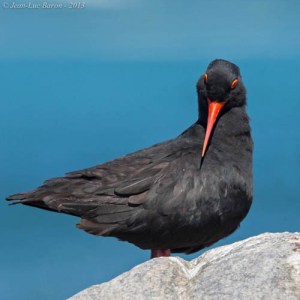

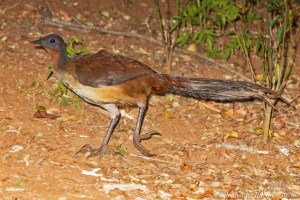
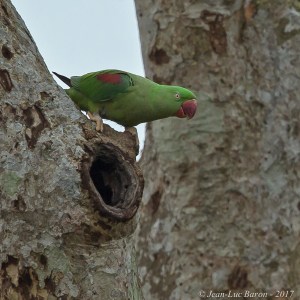

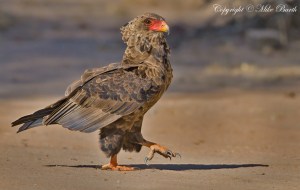
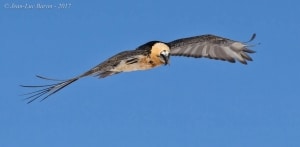
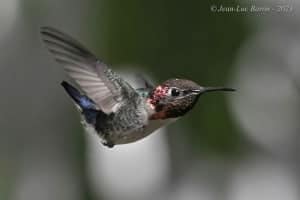
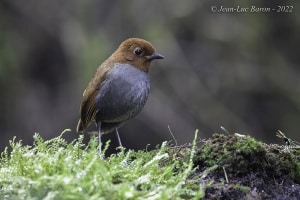
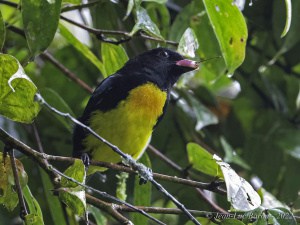
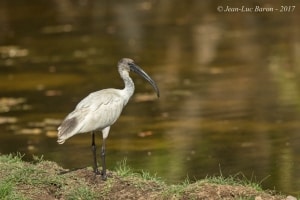

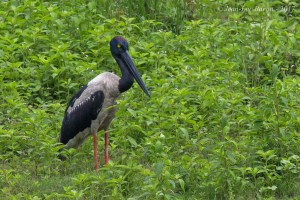

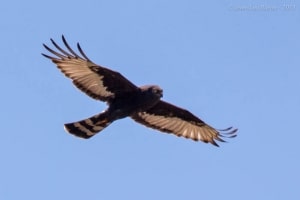

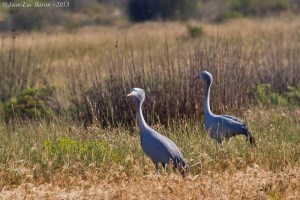
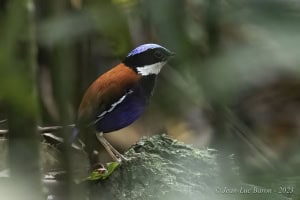

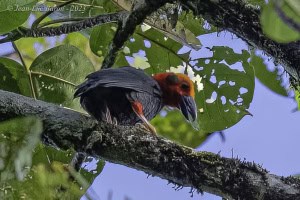
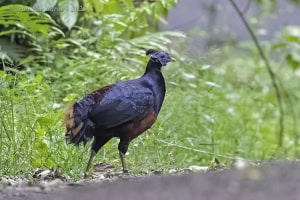
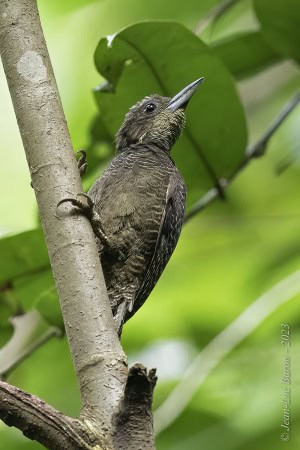
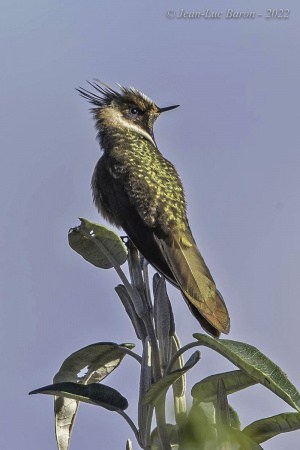
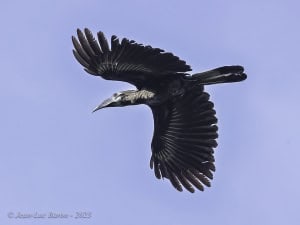
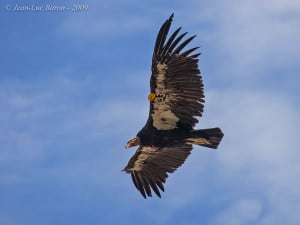
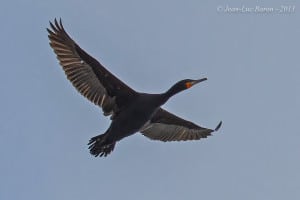

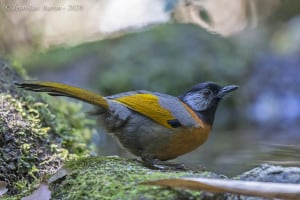
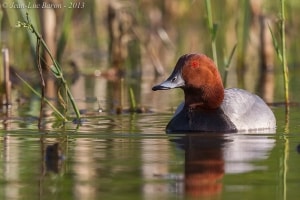
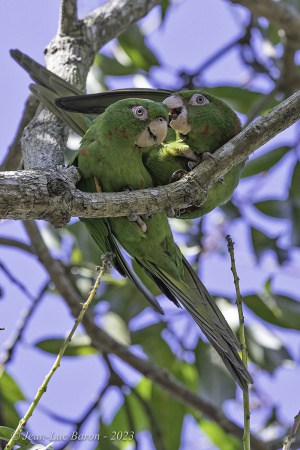
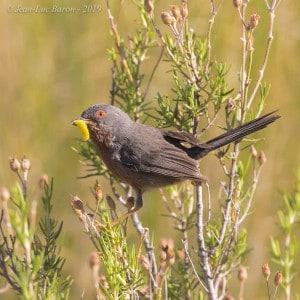
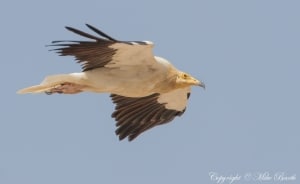
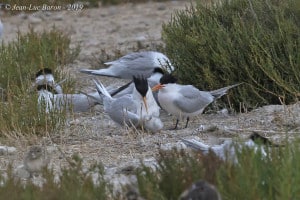
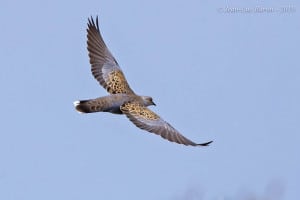
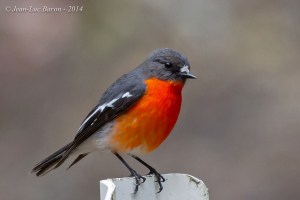
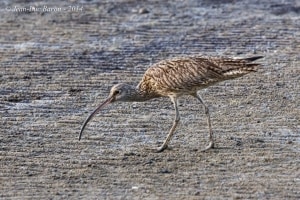
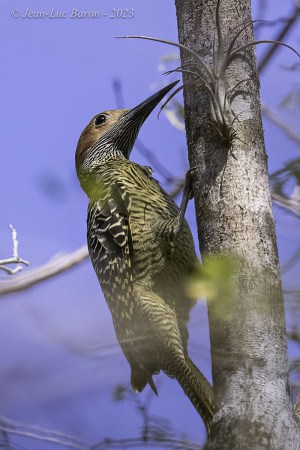
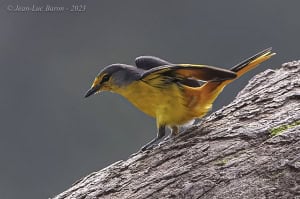

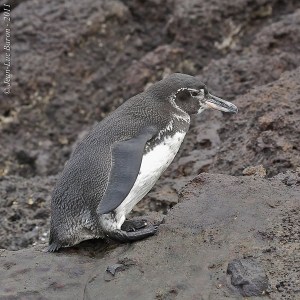
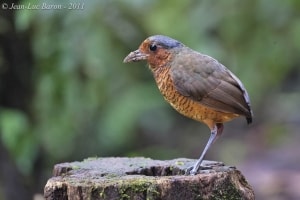
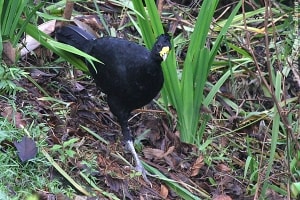
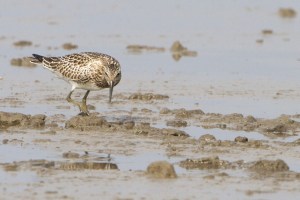

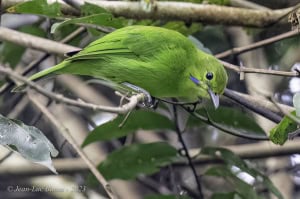
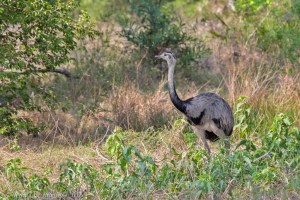
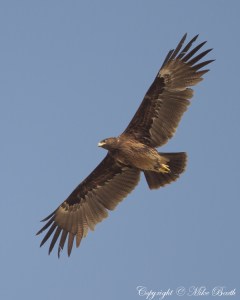
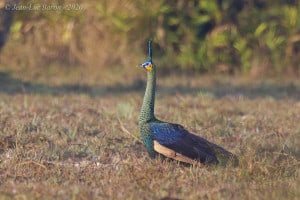
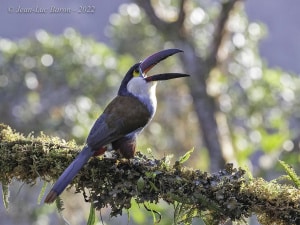
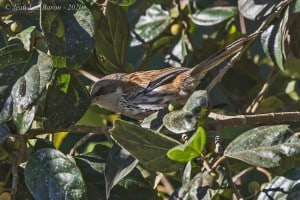
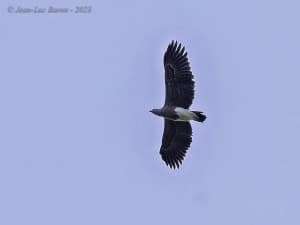

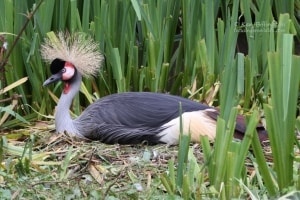
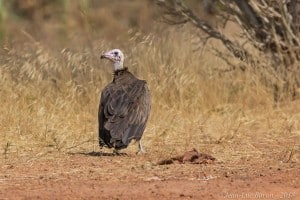
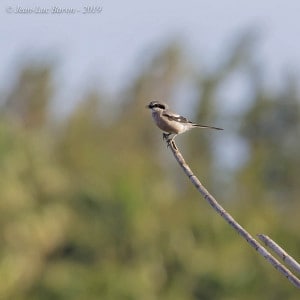
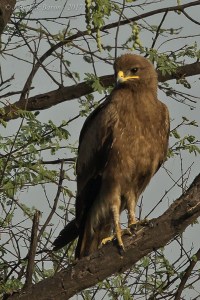
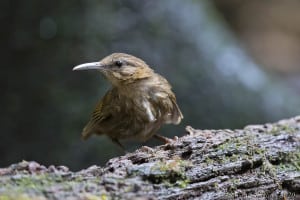
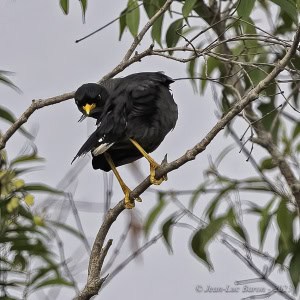
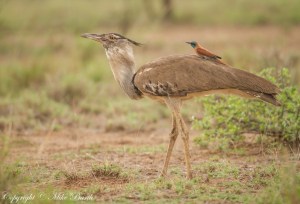
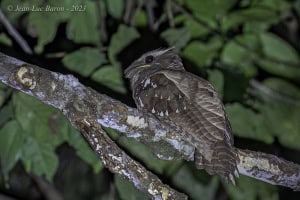
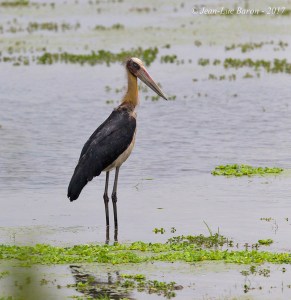
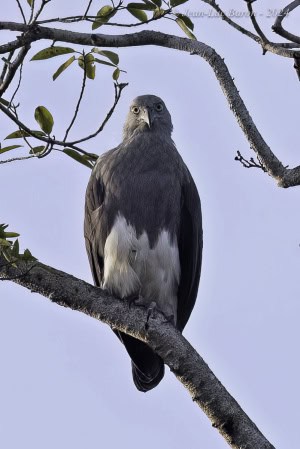
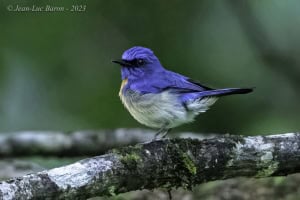
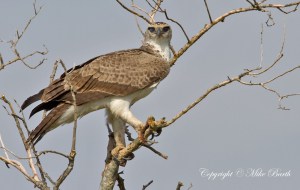

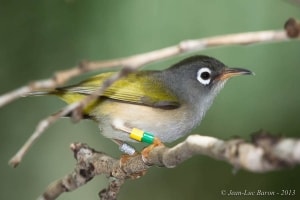
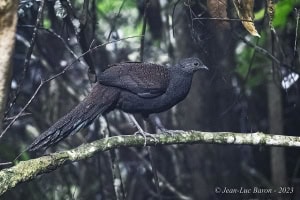
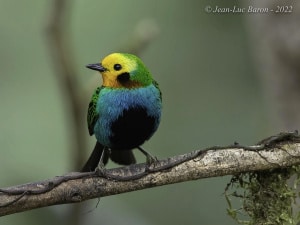
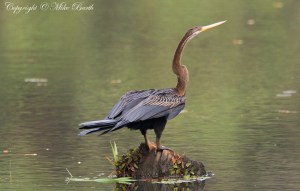
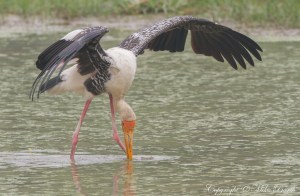
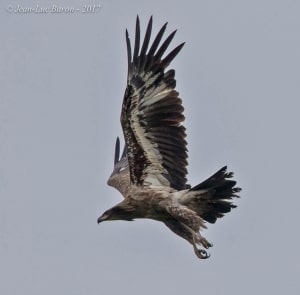
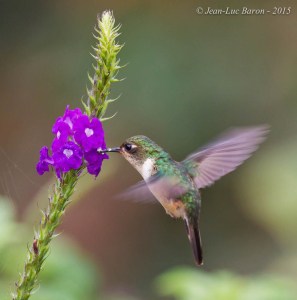
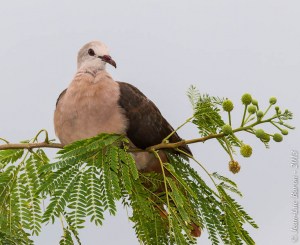



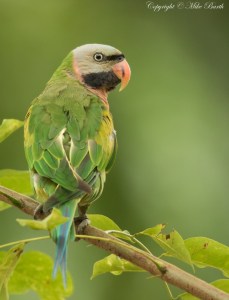

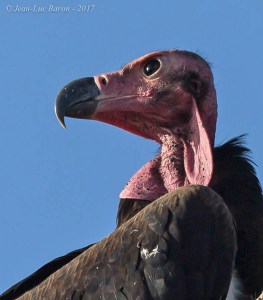
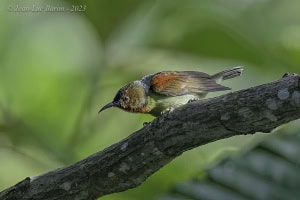
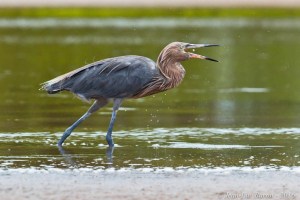
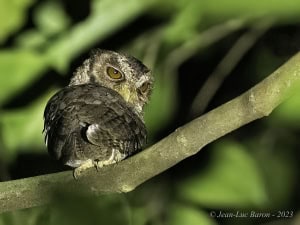
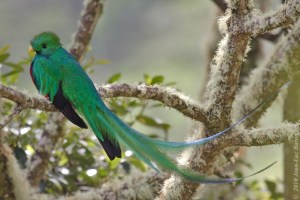

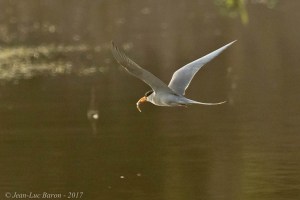

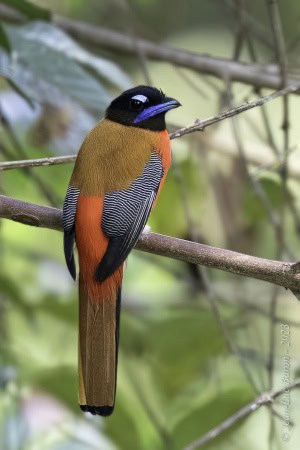
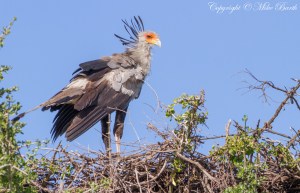
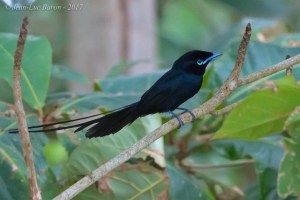
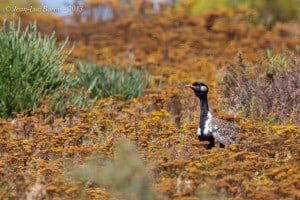
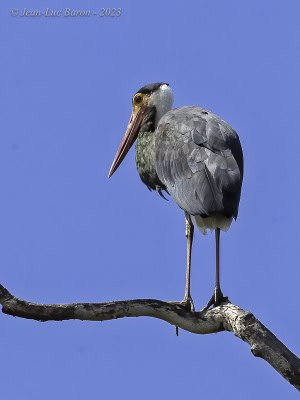
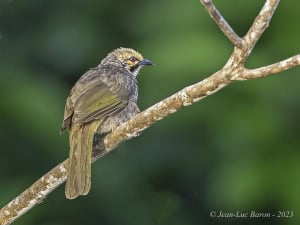
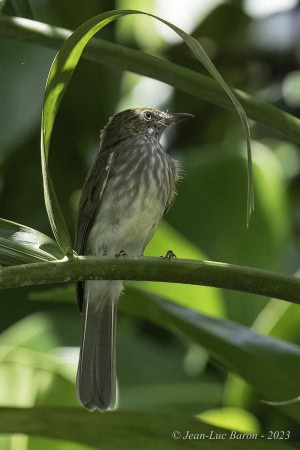
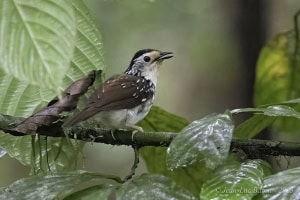
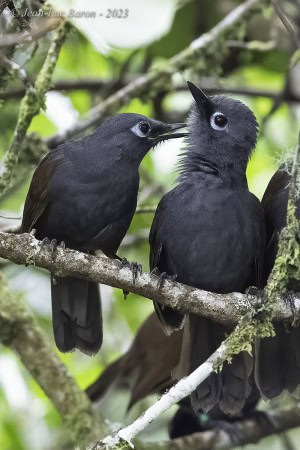
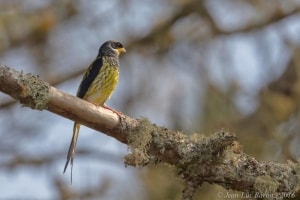
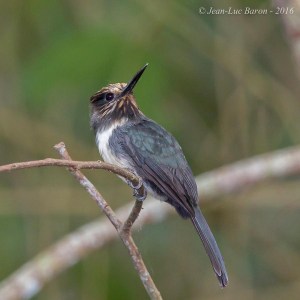
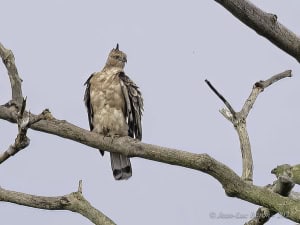
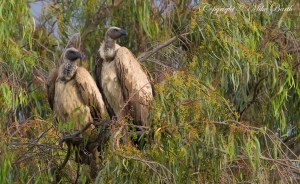
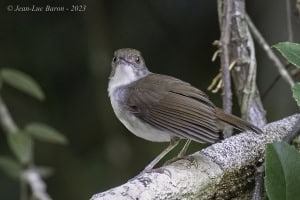
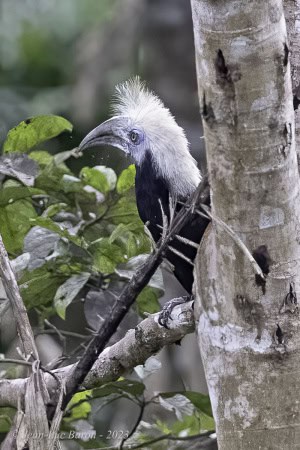
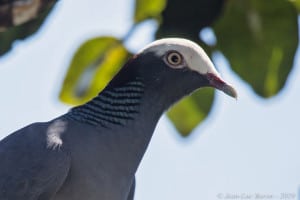

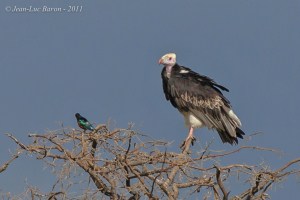
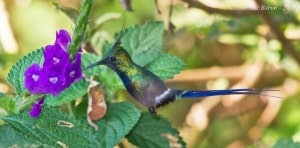
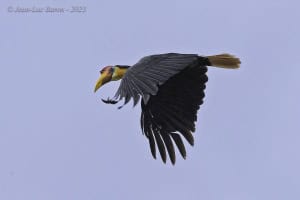

Leave a Reply